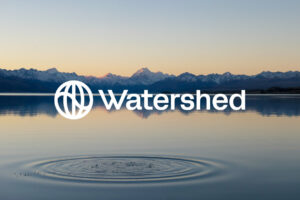A guest post by Rose Stephani, Project Leader, Sustainability at H&Z. H&Z partners with JAGGAER to help organizations transform their ESG data into actionable sustainability outcomes. By combining H&Z’s sustainability expertise with JAGGAER’s advanced procurement technology for Scope 3 emissions tracking and data collection, organizations can better integrate sustainability into their procurement strategies. This partnership enables companies to enhance supplier engagement, align ESG goals with business objectives, and achieve measurable progress in their decarbonization efforts.
Empowering Procurement to Lead Sustainability Efforts Through Strategic Action and Measurable Impact
Companies are under increasing pressure to engage with ESG and decarbonization from multiple angles. Compliance with national and international regulations is of course a pressing concern to avoid fines, disruptions to operations and reputational risk. But there are other considerations. These include risk management and resilience in a volatile world. Companies want to avoid or mitigate disruptions to the supply chain and manage stranded assets. Thinking longer term, attracting ESG-focused capital will be key to driving growth and competitiveness for many companies. There is a balance to be struck between pursuing ESG goals and containing costs to stay competitive. And for many organizations the most significant consideration is social responsibility. They want to transition their operations in line with the science on climate change, not least because this brings benefits in terms of reputation and brand value, which are increasingly important in the battle to win customers and talent.
As companies seek to address these issues, the role of procurement is changing. Many procurement professionals are already well aware that the function needs to develop strategically to reflect this change. The question today is, how should procurement do this in practice? Of particular importance in this regard is procurement’s role in measuring, understanding and reducing Scope 3 emissions in pursuit of companies’ decarbonization efforts. Procurement stands at the center of several competing aims and objectives: cost savings, compliance, reputation, innovation, finance and supply chain resilience. How can sustainability be inserted within this framework?
At H&Z we have developed a three-step approach to addressing this challenge:
- First, measure the emissions related to the company’s supply chain.
- Second, interpret the hotspots in the supply chain and identify where reduction is possible.
- Third, reduce carbon emissions by building feasible, practical and cost-effective decarbonization plans including an understanding of roles and responsibilities and how these align with the rest of the company.
This is, of course, much easier said than done because any company – and this is true across different industries – will face unique challenges at each step. In terms of measurement, the biggest challenge is likely to be the lack of data and/or the poor quality of data. Companies have extensive and diverse supplier bases and the data these suppliers provide on emissions inevitably varies. In most large enterprises data is siloed in different ERP systems and the data is not easily comparable, especially if you don’t know how calculations have been arrived at because you did not establish the ground rules in the first place. Your suppliers themselves vary in their size and crucially in their maturity in terms of sustainability. Many do not have the resources or the knowledge to help you measure their performance on emissions and other targets.
However, supposing you have the data, how do you go about interpreting it against your firm’s goals? The Scope 3 data insights must be aligned with actionable targets. You will need to match these executive and regulatory goals with the capabilities of individual business units, which will require considerable depth of understanding and negotiation with stakeholders. To ensure that your actions have maximum effect on decarbonization, you also need to identify hotspots, which is not easy in complex supply chains. If you wish to make continuous improvements, you should use what you learn to improve the underlying data where possible.
Moving on to reduction, the challenge is first to prioritize and then take action. You need to make some tough decisions to balance cost and emissions reduction, ranking measures as cost positive, neutral and negative. Drawing up implementation plans will require leaders to build cross-functional cooperation and supplier engagement.
Supplier engagement is essential
This is the key: engagement with suppliers at every step to maximize transparency in material inflows. First, provide specific guidance on the quality of information they must provide to assist with measurement. This may be industry-specific and should be provided in a standard format to aid comparability and consolidation of data. You need to be very clear on what kind of data is acceptable and what isn’t: is aggregated spend-based data sufficient or do you need more granular transaction-based data? You are unlikely to get perfect data from the very beginning, but you should set expectations for where you expect to see continuous improvement of the quality of data provided.
It is vital that your suppliers should understand your company’s decarbonization ambitions. This will help identify the material inflows that can be prioritized to provide quick wins. Again, work with your suppliers without putting undue pressure to deliver everything right now. This will take time, so don’t let perfect be the enemy of good. For each supplier you should therefore create a realistic roadmap for reduction that considers their current maturity. To make progress, you must anchor decarbonization in your procurement process – it cannot simply be an add-on or “nice to have”. So include carbon reduction criteria in the tendering process. Set KPIs and measure progress over time. One useful tool here is carbon pricing: put a financial value on carbon emissions and price it into your procurement decisions.
At H&Z we see three aspects to the decarbonization transition in alignment with your company’s ambitions, which will change over time as progress is made. Compliance with existing international standards is the minimum ambition. The next is to fulfill the expectations of your stakeholders: investors, customers, employees, the public. Finally, by embedding sustainability into your company culture, you will become a leader and create a lasting competitive advantage.
Your current level of ambition should determine your approach to the challenge and the strategy you should pursue. If you are pursuing regulatory compliance, you may only need basic spend-based data and your strategy should be to include the legally required environmental, social and governance practices into your procurement processes. If your ambition is to compete on sustainability, at least in some areas, you will need to go further by engaging actively with suppliers. This could take the form of requiring them to provide more granular activity-based data. Not everywhere at once, but in the hotspots you identify. Category managers can then play a key role here, for example by exploring market opportunities for low-carbon alternatives. And if you really have ambitions to lead in sustainability while ensuring supply chain resilience you will need to co-create solutions with suppliers while embedding ESG as a consequential decision factor in both internal processes and award criteria.
Some examples of best practices
At H&Z we have seen some good examples of co-creation processes and award decisions that advance the decarbonization agenda.
First, signal to the market your future intent. A large French infrastructure recently noted that the market in steel was not yet mature enough to meet its ambitions, but communicated to suppliers that from 2030 it would only consider decarbonized steel for tenders.
Second, set clear criteria for high-value bids. In Sweden, companies wishing to compete in public tenders with a value above SEK 500 million (approximately €43 million) must have an Environmental Product Declaration (EPD). This signals a manufacturer’s commitment to measuring and reducing the environmental impact of its products and services and reporting these impacts in a hyper-transparent way.
Another approach used by a Dutch rail operator was to introduce a policy whereby products must include a certain percentage of recycled material. Compliance is not mandatory, but if suppliers cannot comply, they must provide good reasons to show that it is not possible.
One of the most effective ways to bring suppliers on board with your decarbonization ambitions is carbon pricing, i.e. including carbon emissions in price-based award decisions. A German shipping company included a bonus/malus system, thereby making carbon emissions a quantifiable element in the awards process.
This topic will require close attention by procurement professionals over the years to come and it is essential to have the technology in place to enable measurement, interpretation and analysis, setting targets and tracking progress.
Rose Stephani is Project Leader, Sustainability at H&Z Management Consulting.
On-Demand Webinar




